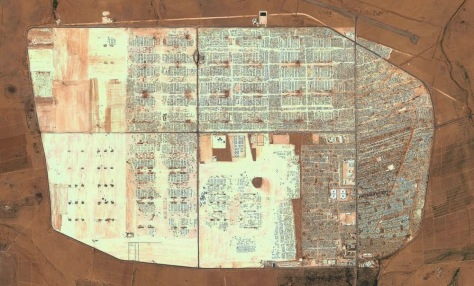Erdogan says Europe not ready to face 3mn refugees as EU-Turkey deal collapse looms
The Turkish president issued a veiled threat to unleash a wave of refugees on Europe as EU officials warn of a potential collapse of the union’s deal with Ankara, which has curbed the flow of refugees across the Aegean Sea. Speaking to Al Jazeera, Turkish President Recep Tayyip Erdogan said Turkey is currently hosting three million refuges on its territory and that if they all marched into Europe, the Europeans would not know what to do with them. He also reminded them that under the terms of Turkey’s refugee deal with the EU, the union pledged to provide six billion euros in aid over the course of several years. “As far as I can remember, until now the EU had only given 250-300 million Euros to Turkey so far,” he said. The veiled threat comes days after several officials in Europe voiced concern that the EU has no contingency plan for a collapse of the Turkish deal.
Syria-Jordan border: 75,000 refugees trapped in desert no man’s land in dire conditions
Video footage and satellite images showing makeshift grave sites and burial mounds offer a rare glimpse inside a desert no man’s land between Jordan and Syria where tens of thousands of refugees who have been virtually cut off from humanitarian aid for two months are stranded, said Amnesty International.
The video footage was obtained from Tribal Council of Palmyra and Badia, which has a network of activists operating inside the area known as the berm, and independently verified using satellite imagery.
Rich nations’ self-interest means refugee crisis set to get worse, not better
Amnesty has a (perhaps not particularly recent) but compelling denunciation, “Rich nations’ self-interest means refugee crisis set to get worse, not better”, lambasting countries who send refugees back to conflict zones (Kenya, we’re looking at you; but also Pakistan, Iran and Jordan), those who leave refugees to wallow in misery and/or limbo (Myanmar, Malaysia, Australia and the EU under fire here), and the dangerous routes that refugees take in their flight to freedom in Southeast Asia, Central America and, more famously, the Mediterranean. [see the full article]
South Sudan Crisis Strains Uganda’s Exemplary Refugee Welcome
Uganda is celebrated around the world for providing refugees with the land and resources to become self-sufficient. But war in South Sudan is putting pressure on that model, leaving the most vulnerable struggling to survive, reports Carolyn Thompson from Uganda.
[…] Inyani fled from neighboring South Sudan in July after being mistaken for a rebel while going to pay his children’s school fees in the town of Nimule. The 30-year-old was arrested and beaten by a group of men in uniform, his arms tied behind his back while he was hit with sticks and rammed in the chest with guns.
He was released after the mistake was realized, but decided his family needed to leave the country. He, his wife, his two daughters and his son piled on to a small motorbike and drove from their hometown of Lao to the Ugandan border, about 22 miles (35 kilometers) away.
His family are now among more than 250,000 South Sudanese refugees who have flooded into Uganda since renewed clashes between government and opposition forces broke out in July. That is more than seven times the number who fled to Uganda during the entire first half of this year. By October, more than a million South Sudanese were displaced – with Uganda hosting the highest number by far.
Afghanistan May Have to Accommodate 1.5 Million Refugees in 2016
Afghanistan will reportedly take in more than 1.5 million Afghan refugees by the end of the year, challenging the government at a time when Kabul is already struggling against resurgent Taliban militants and an emerging Islamic State group (IS).
Based on figures compiled by the United Nations Refugee Agency (UNHCR), some 20 percent of Afghanistan’s population already are former refugees known as “returnees.” Many of them, along with internally displaced Afghans and Afghans living in “refugee like” conditions, are part of a group of people the United Nations calls “people of concern.” The U.N. says this group of people has grown by 33 percent in 2015, and numbers more than 1.7 million people who are in desperate need of assistance.






























